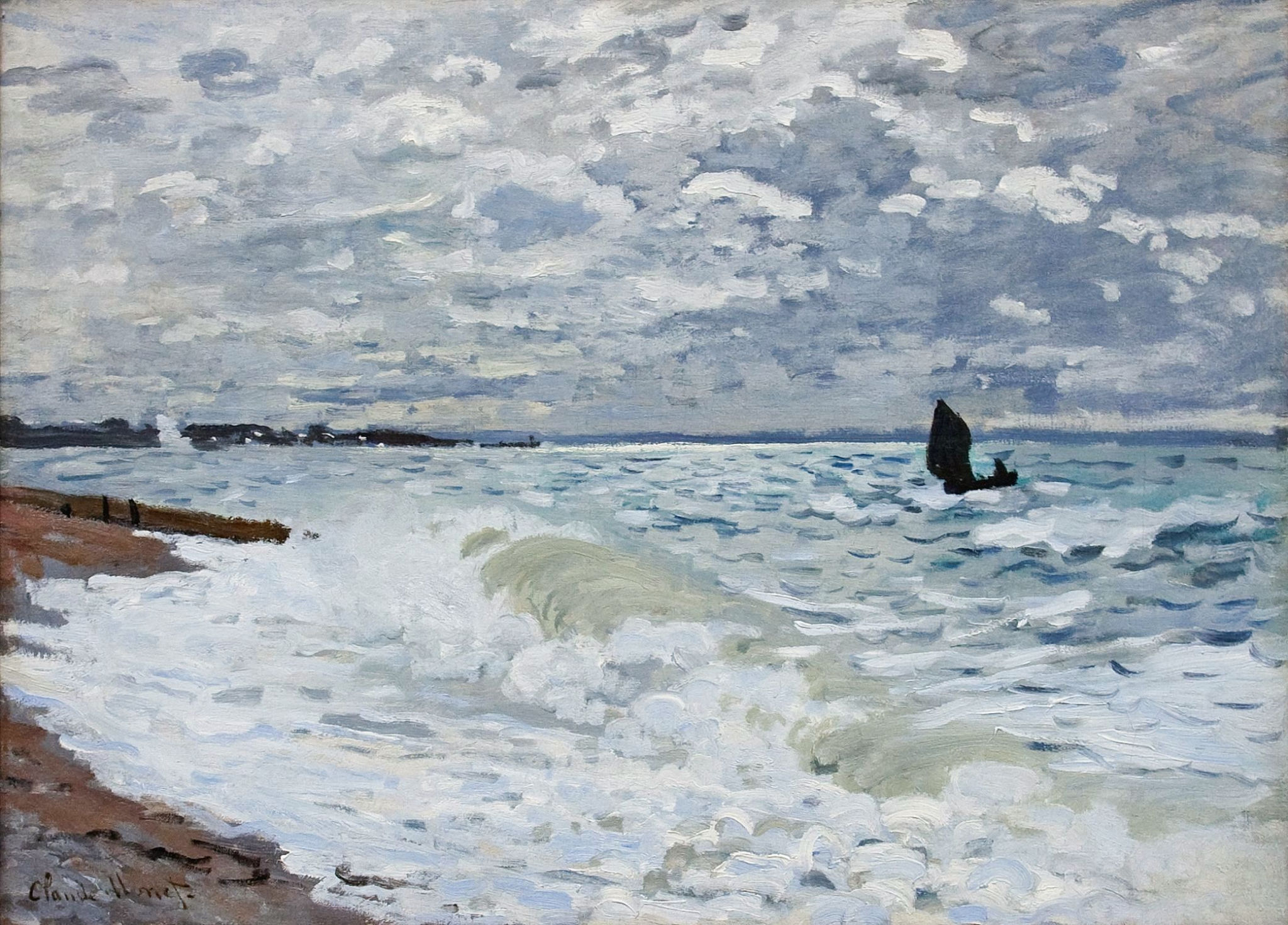artsMonet.com
Claude Monet 1840-1926
Claude Monet - The Sea at Saint-Adresse 1868
 The Sea at Saint-Adresse |
From Carnegie Museum of Art, Pittsburgh:
This windblown seascape, vigorously painted and richly textured, is an outstanding example of Monet's early work. He undoubtedly spent a good deal of time on this beach in his youth as he grew up in Saint-Addresse, a residential suburb of Le Havre from where this view was painted. It was completed in 1868, less than ten years after Monet first decided to become an artist. Its subject is traditional, with its strongest precedents in seventeenth-century Dutch painting, but its style is distinctly modern. He must have thought a good deal of the picture because he showed it in the second Impressionist exhibition held in Paris in 1876. Monet first divided the picture almost exactly in half between the sea and sky, drawing attention to the abstract qualities of the composition. He then applied his paint with forcefulness and subtlety, choosing his colors with a refined eye to capture the effects of the overcast day and the movement of the sea. The many different strokes in the water, for example, suggest its various states—the rippling surface of the bay, the rise and fall of the wave, and the sheet of rivulets on the beach—and the large triangles of the bay and the eddies on the beach are echoed in the similar shapes of the shore. Above this pattern of brushwork and shape is the sky, which is covered with longer, thicker, more opaque strokes. The boldest ones, like those of the sea, are primarily horizontal, but they vary more in their undulations and placement than those below them, making the sky weightier and even more active than the sea. This effect is enhanced by Monet's use of stronger contrasts in the sky, with lead whites juxtaposed with larger areas of blue and purple. Although nature clearly dominates this view, as it does in so much of Monet's work, humanity is present in the small houses barely visible on the distant peninsula, in the mooring posts on the beach to the left, and in the traditional fishing boat on the water. Monet has very carefully placed the boat near the end of the large flat area of blue-gray clouds, just where the long stroke of white on the horizon begins to dissipate. Moreover, if one constructed an imaginary square whose left side was the left side of the canvas, its right side would run straight through the sail of the boat, locking it into perfect harmony with the sea and the shore. Whether Monet did this with a measuring device or not, it indicates his sensitivity to the arrangement of his picture. Even the location of his signature parallels the horizon, fills the void of the triangle of the shore, and seems to balance the boat. This kind of awareness, along with the viewer's firm footing on the beach, separates Monet's painting from its earlier nineteenth-century romantic prototype—the view of the storm-tossed boat. Although Monet's carefully observed scene evokes similar feelings about the grandeur of nature, it is a familiar world in which we have a place and where sea and sky are balanced. It is a world as reassuring as Monet's rich array of blues and grays and as enlivening as his exuberant brushwork.